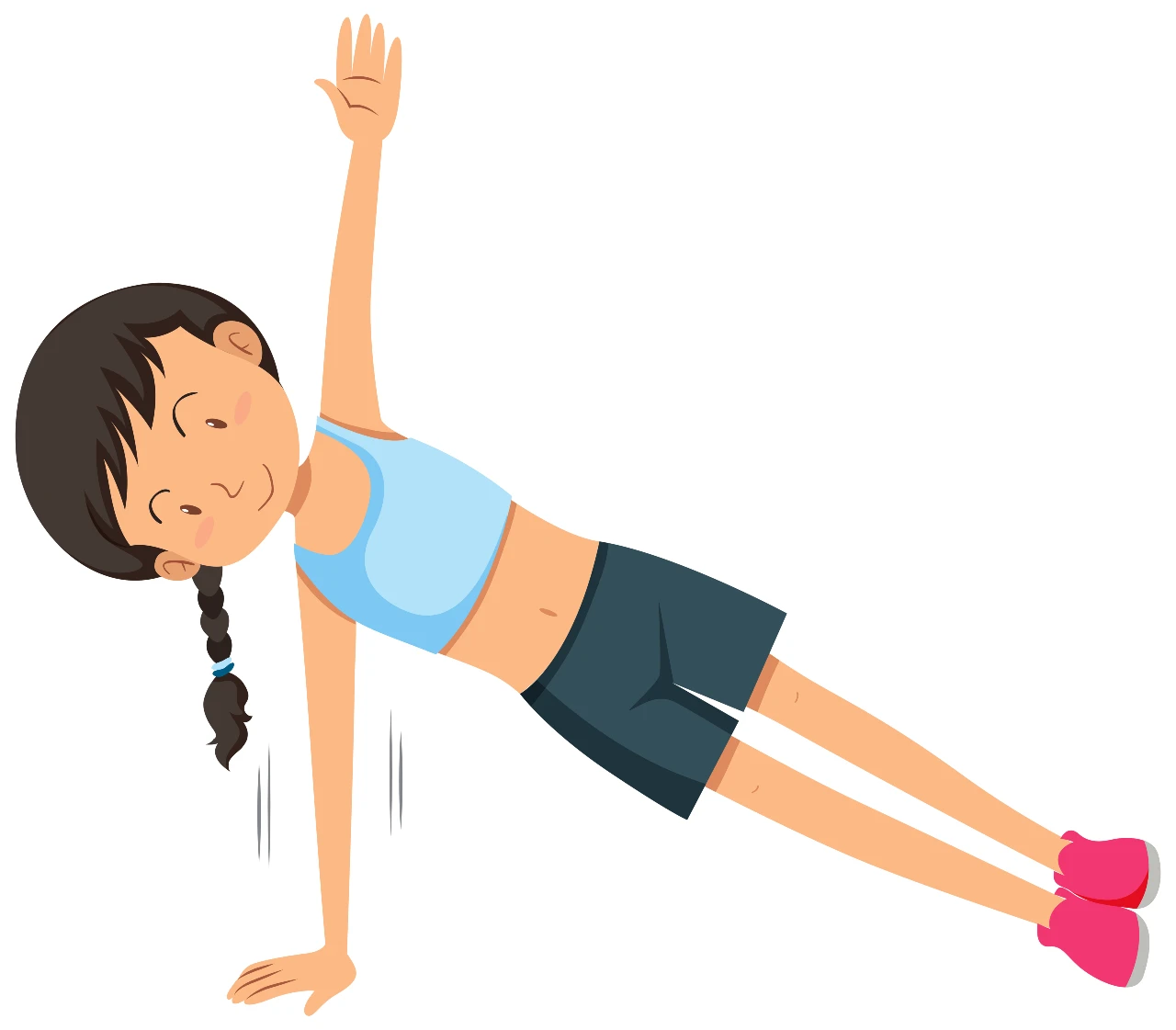
Written by
Anju Francis, MPT in pediatrics
Physiotherapist
Pediatric physiotherapy is a broad field that addresses a child’s motor development. Every child is unique, as are their skills and needs. Every kid will also require a unique set of therapy process.
Common conditions treated with physiotherapy in children
Paediatric physiotherapy addresses neurological, orthopaedic, genetic, and cardiovascular issues that affect a child’s growth and motor skills. Physiotherapy is commonly used to treat the following conditions:
Cerebral palsy
Cerebral palsy is a series of disorders that impact a person’s ability to move, balance, and maintain posture. The most prevalent motor disability in children is cerebral palsy. It is a permanent, non-progressive condition. Damage or abnormal development in the areas of the brain that control movement causes cerebral palsy. These occurrences can occur before, during, or immediately after birth, as well as throughout the first few years of life, when the brain is still developing. The specific cause of cerebral palsy is unknown in many cases. There is no cure for Cerebral Palsy, but Cerebral Palsy treatment can help improve a person’s quality of life.
Developmental delay
Physiotherapy prioritises gross motor milestone delay. Gross motor delay is an umbrella diagnosis for children who are not rolling, sitting, crawling, walking, or executing other age-appropriate coordinated arm, leg, and trunk motions. A few causes of developmental delay include premature delivery, genetic causes, nerve and muscle diseases, and developmental diagnosis. There are other unidentified causes.
Genetic abnormalities
Genetic abnormalities can begin before birth and can cause delays in development and motor skills. Down syndrome, muscular dystrophy, and spina bifida are the most frequent conditions.
Musculoskeletal and Nerve Injuries
Paediatric therapy is also offered for muscle and bone diseases. Fractures, contractures, or abnormalities, as well as birth traumas, can all impact their ability to move. Physiotherapy can also be used to correct congenital defects that occur at birth.
Brain and Spinal Cord Injuries
Traumatic injuries to the growing brain and spinal cord, even after birth, can result in paralysis or weakening in many body regions, affecting their development and motor development.

Techniques
The major techniques used in pediatric physiotherapy are
Hydrotherapy
Hydrotherapy is a type of physiotherapy that uses the natural buoyancy, heat, and resistance of water to achieve a variety of therapeutic outcomes. This might be an excellent method to create a pleasant and engaging environment to aid in your child’s recuperation. Swimming is not required for your youngster, but knowing it always protects his or her safety.
The physiotherapist will first do an in-depth assessment on dry ground to identify the condition, arrange treatment, and check your child’s suitability and safety in the water. Various treatments will be included in the pool depending on your child’s condition and symptoms. It can help with movement, balance, strength, proprioception, relaxation, and stretching.
Hydrotherapy has numerous advantages for children and some of the main advantages include.
- Faster Recovery
- Pain relief
- Relaxation
- A fun and engaging environment
- Safe
- Improve fitness
Constrain Induced Movement Therapy or CIMT
It works by utilising a mitt or sling to restrain the unaffected ‘good’ upper limb while the kid performs a series of timed, difficult gross and fine motor activities with the affected or ‘bad’ hand under careful supervision.Your child can overcome lack of use by encouraging the use of the affected hand. It is critical that your kid has some active movement in their weaker arm since they will be expected to complete a circuit of tasks such as stacking wooden blocks, searching for marbles hidden in sand, and turning over playing cards. A trained physiotherapist supervises these tasks in order to enable a normal movement pattern of the arm.
Electrical Stimulation
Electrical stimulation is non-invasive and passive, and it helps improve strength and motor function. It offers an alternative to resistive exercise techniques for children with poor selective muscle control, and it may enhance treatment adherence in children who struggle with exercise programmes. It can be used on children following upper and lower limb surgery to train muscular movement and minimize pain.
Proprioceptive Neuromuscular Facilitation or PNF
It is used to improve functional mobility, coordination, and movement quality in the upper, lower, and trunk limbs. It is also employed as a stretching method. It is always performed in a diagonal pattern, with the primary goal of strengthening and increasing coordination. To achieve the desired results, it employs several forms of muscle contraction and relaxation.
Stretching
Stretching regimens are an essential component of physiotherapy. Muscles can contract and shorten after an injury or when a part of the body is immobile for an extended length of time. This might cause discomfort, postpone recovery, and bad posture. They are intended to aid in enhancing flexibility, muscular control, and range of motion.
The stretching program can include,
Passive Stretching: Physiotherapist will apply a stretch to your muscle.
Active Stretching: Physiotherapist will explain a stretch to you, but you will complete the stretch.
Soft Tissue Manual Therapy
Soft tissue techniques such as muscle energy technique, active release technique, trigger point release, and myofascial release are primarily used to increase muscular motion, and relieve tightness and pain. It also strengthens muscles by activating neural connections.
Benefits and Risks of Paediatric Physiotherapy
Paediatric physiotherapy is different from regular physiotherapy. It allows the child and their family to be involved in activities and exercises aimed at improving the child’s physical well-being.
- A paediatric physiotherapist uses play to ensure the child participates actively in the exercise routine with the correct amount of focus and enthusiasm. They also provide one-on-one care to children and ensure they’re enjoying the activities, increasing the child’s motivational level and getting a better outcome.
- Besides increasing a child’s range of motion, paediatric physiotherapy also helps them gain strength and balance so they can develop the proper tilting and righting responses while also enabling them to stop falling using the correct protective responses in the body.
- Paediatric physiotherapy helps children’s reflexes, particularly automatic reactions such palmar grab, asymmetrical tonic neck reflex, and positive support, which are frequent in babies.
- Finally, it assists in aligning a child’s body in the proper postures to promote physical posture.
Physiotherapists take great care to keep patients safe, especially in paediatrics. However, physical therapy, like any other treatment, has risks.
In some circumstances, your kid may claim that they are more uncomfortable than they were before physical therapy. It is common to have some soreness following active sessions. The therapeutic method entails working on weak and delicate areas, which might exhaust and irritate them. However, if any discomfort appears peculiar or severe, never hesitate to consult your therapist. They can help ensure that particular exercises do not aggravate the injury.
If your child is eager to improve, they may overdo it at home. The home exercises prescribed by their physical therapist will almost certainly include recommendations on how frequently they should be performed. Exercising more frequently than recommended may cause your child’s injury to worsen. Always ensure that your child follows the guidelines that their therapist has given them in order for them to heal as quickly and securely as possible.

